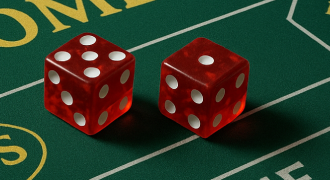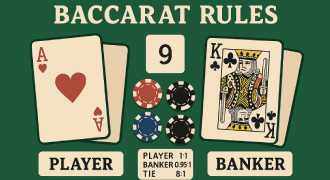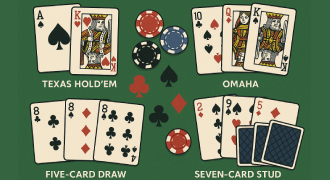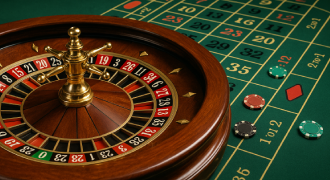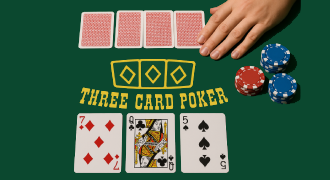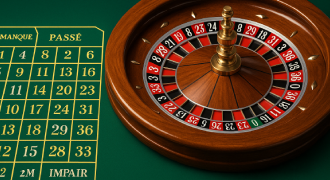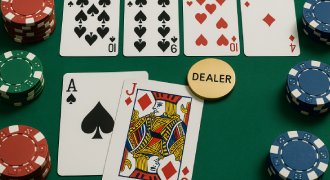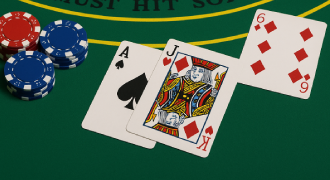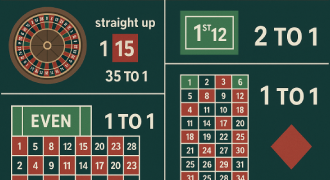Single Deck Blackjack – Classic Style, Simple Play
In a world of noisy side bets and bloated rulebooks, this lean, high-signal variant keeps the core KPI crystal clear—beat 21 before the dealer does. One deck creates transparency, accelerates decision loops, and rewards disciplined execution.
Whether you’re piloting a weekend sprint or a long-haul bankroll roadmap, the format scales: clear deck rules, crisp actions, measurable outcomes. Navigate with data, not vibes, and let your edge compound like interest. Ship decisions, not Single Deck Blackjack drama now.
Basic information about Single Deck Blackjack
This variant uses exactly one 52-card shoe, which shortens cycles and tightens feedback loops. Fewer unknowns mean sharper reads and faster iteration on your lines. Teams value the clean telemetry: you can map game odds to expected value with less noise. In brick-and-mortar or online environments, table limits vary, but the operational objective remains identical—make disciplined, positive-EV decisions under Single Deck Blackjack pressure.
How is Single Deck Blackjack unique?
With only one pack, card visibility increases and volatility becomes more tractable. Risk posture changes because the removal of any single card updates probabilities more materially than in multi-deck sets. Many casinos offset that clarity with rule tweaks, so always read the fine print before you commit capital. When executed with focus, the format empowers sharper timing, leaner decision trees, and a cleaner control surface for advantage play.
Basic rules and differences in gameplay
Core mechanics stay familiar: aim for 21 or less while beating the dealer’s total. Typical single-deck tables modify payouts, dealer behavior, or doubling permissions, so align on single Blackjack deck rules before your first chip hits felt. The matrix below highlights common rule knobs and their operational impact. Use it to calibrate expectation and choose the table that matches your risk policy and throughput goals.
|
Item |
One-Deck Typical |
Multi-Deck Typical |
Impact on Player |
|
Blackjack Payout |
6:5 or 3:2 |
Usually 3:2 |
6:5 increases house margin; prefer 3:2 when available |
|
Dealer Stands/ Hits on Soft 17 |
Often hits S17 |
Mixed |
Hitting S17 adds friction to player EV |
|
Double After Split (DAS) |
Sometimes restricted |
Often allowed |
Restrictions reduce flexibility and EV |
|
Re-split Aces |
Rare |
Sometimes allowed |
Fewer splits reduce upside variance |
|
Peek for Blackjack |
Sometimes no-peek |
Often peek |
No-peek exposes players to more lost doubles/splits |
What is Single Deck Blackjack: Step-by-Step Guide
This step-by-step playbook turns Single Deck Blackjack into a clean operating routine: set your stake, read the board, execute, and review. Follow the sequence to stay aligned with Single Deck Blackjack rules, cut noise, and convert choices into measurable EV at a live table or in online play.
- Step 1: Set Your Bet Amount
Lock your stake based on bankroll management, not gut feel. Define unit size (e.g., 1–2% of bankroll) and cap exposure for downswings. If you intend to enjoy Single Deck Blackjack online, confirm table min/max and latency so your decisions land cleanly. Treat sizing as a product launch gate: no greenlight without a number and rationale.
- Step 2: First Deal – You vs the Dealer
You receive two cards; the dealer shows one up and one down. Assess totals, soft vs hard hands, and immediate leverage points. Translate the board state into actionable probabilities using a reference chart or your memorized baseline. Context-switch smoothly: online play and live tables require the same logic, just different pacing.
- Step 3: Decide to Hit, Stand, Split, or Double
Anchor decisions in the chart you trust. Doubling targets player-favorable totals against weak dealer upcards, while splits unlock value for pairs under the right conditions. Keep discipline: mis-timed aggression burns EV faster than a misread. If you practice a counting system, track the running count and adjust your bet sizing and lines accordingly.
- Step 4: Dealer Plays and Final Result
After you act, the dealer reveals the hole card and resolves according to house policy. If the dealer must hit soft 17, expect more dealer draws, which nudges variance upward. Compare outcomes to your forecast and log misplays for post-session review. Close the loop: refine assumptions, update your approach, and redeploy.
Tips for Single Deck Blackjack strategy
Operationalize fundamentals with a compact checklist. First, learn a baseline derived from a vetted baseline and rehearse it until responses are automatic. Second, pressure-test your lines in low-stakes sandboxes before moving to cash tables. Third, when rules shift, recalc your Single Deck Blackjack odds; small toggles alter EV and demand immediate playbook updates.
- Prioritize tables that pay 3:2 on naturals.
- Avoid hit-soft-17 if possible; standing S17 is friendlier.
- Size bets within a strict bankroll policy.
- Track results; root-cause big deviations before scaling up.
- Carry a pocket strategy chart until you go automatic.
Single Deck Blackjack for real money or for free
Scope your objective. For practice, sandbox in demos to sharpen muscle memory and decision latency. For capital deployment, prioritize real money Single Deck Blackjack only when rules favor the player and table speed matches your rhythm. For separate testing, mark a session as real money and audit every significant hand to keep governance tight.
Pros and Cons Single Deck Blackjack
Below is a no-fluff impact review to help you allocate bankroll and table time with intent. I benchmark signal clarity, speed, and EV drift under typical deck rules, then map mitigations you can deploy in both online play and retail pits. Use it to pressure-test your Single Deck Blackjack strategy before you commit capital. Treat this as a living brief: validate at the felt, iterate, and scale.
| ✅ Pros | ❌ Cons |
|---|---|
| 📈 Higher information density — easier to track odds after each card 🎯 Stronger leverage for advantage play — edges surface sooner 🖱 Simplified execution — fewer misclicks, faster strategy deployment 🔄 Efficient learning loop — short sessions produce quality data 💡 Muscle memory forms faster for strategy charts |
🎢 Variance cuts both ways — faster cycles compound wins and losses ⚠️ Access constraints — true 3:2 single-deck tables with friendly rules are scarce ⏱ Downswings can escalate without strict bankroll governance |
Finally, some thoughts on Single Deck Blackjack
Treat the game like a product with a live roadmap: hypotheses, experiments, learnings. Align table selection, bet sizing, and timing with your data, not your mood. Use casino game logs to surface error clusters and tune future decisions. When you keep the operating system simple, Single Deck Blackjack delivers lean gameplay with enterprise-grade clarity.
FAQ
Does a Single Deck reduce the house edge?
Yes, under player-friendly policies; harsh payouts or dealer rules can erase the benefit.
What’s the most effective strategy to use?
Use a basic strategy tuned to the exact rule set and consult a Single Deck Blackjack chart.
Are live dealer single-deck tables common?
They exist, but many operators prefer multi-deck for throughput and risk control.
Can card counters gain an edge more easily?
Yes, because count volatility is higher; heat and countermeasures scale accordingly.

